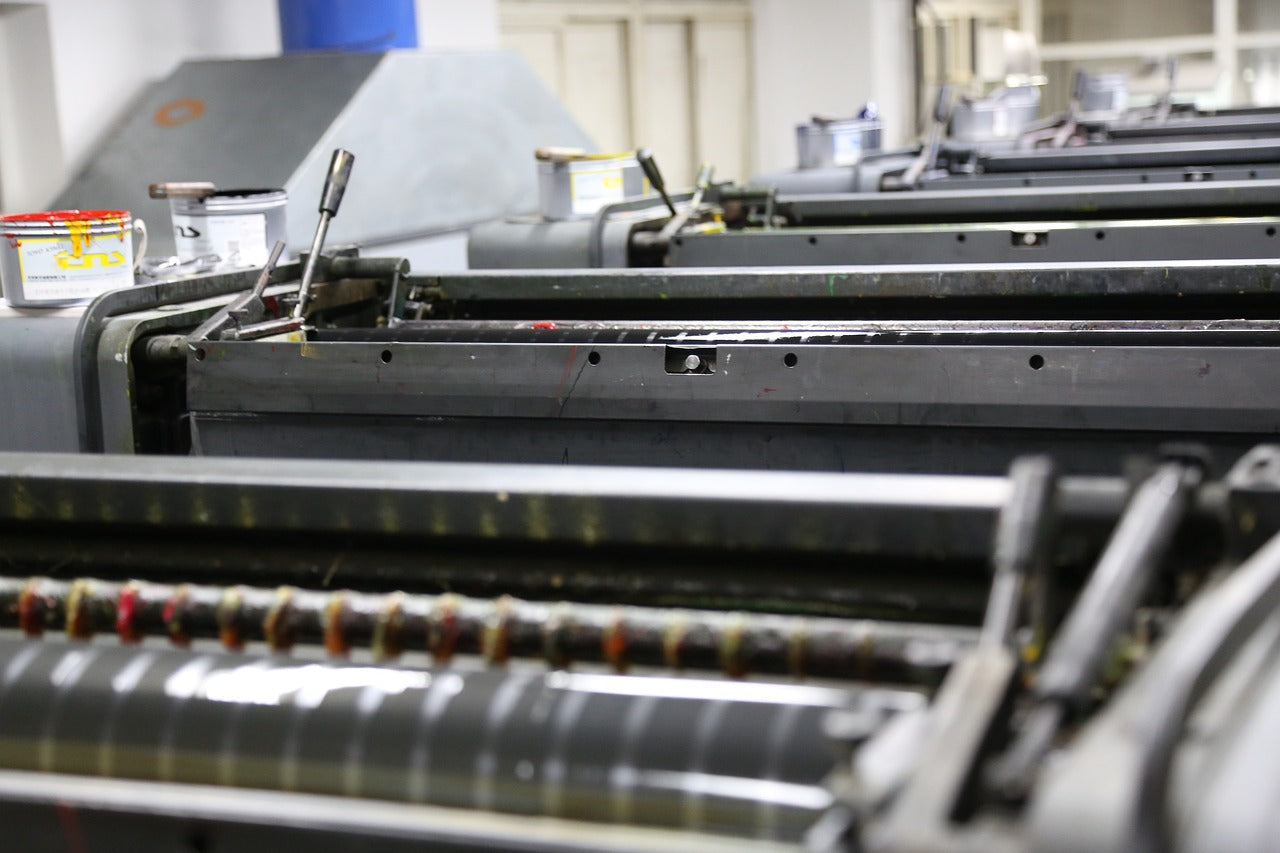When it comes to efficient and high-quality printing methods, sheet-fed offset printing stands out as a reliable choice for various industries, particularly in the marketing sector. This technique, known for its versatility and precision, is essential for producing everything from brochures to high-end promotional materials. Understanding this printing method can greatly benefit marketing professionals looking to enhance their campaign materials.

What is Sheet-fed Offset Printing?
Sheet-fed offset printing is a process where individual sheets of paper are fed into a printing press. Unlike web offset printing, which uses a continuous roll, this method is ideal for smaller, more customized print jobs. The sheets are printed on one side, flipped, and then printed on the other if necessary. This technique ensures high-quality prints with vibrant colors and sharp details.
History and Evolution
The origins of offset printing date back to the early 20th century. Its evolution has been marked by technological advancements that have improved efficiency and print quality. Initially developed to meet the growing demand for color printing, it has since become a cornerstone in the printing industry. The transition from manual to automated systems has significantly enhanced the speed and precision of sheet-fed offset printing.
The Role of Offset Printing in Marketing
For marketing professionals, sheet-fed offset printing offers numerous advantages. It allows for high-quality production of marketing materials, such as flyers, brochures, and posters, which are crucial for brand promotion. The ability to print on a variety of paper types and sizes provides flexibility, making it easier to tailor materials to specific campaigns.
Advantages of Sheet-fed Offset Printing
- Quality Control: One of the main benefits is the superior image quality, which is crucial for marketing materials that require precise color matching and sharp detail.
- Versatility: This method supports a wide range of paper types and weights, allowing marketers to choose the best material for their needs.
- Cost-Effectiveness: For medium to large print runs, the cost per piece can be very economical.
Technical Aspects of Sheet-fed Offset Printing
The process involves transferring an inked image from a plate to a rubber blanket, and then onto the printing surface. This indirect transfer method reduces wear on the plates and produces consistently high-quality prints. The use of advanced machinery allows for precise registration and color consistency.
Key Components
- Plates: Made from aluminum, these plates are coated with a photosensitive material that is exposed to a laser to create the image.
- Blanket: A rubber surface that transfers the ink from the plate to the paper.
- Ink System: Delivers ink evenly across the plate to ensure consistent coverage.
Environmental Considerations
As sustainability becomes a priority in all industries, including printing, sheet-fed offset printing has adapted to incorporate eco-friendly practices. Many printers now use soy-based inks and recycled papers, reducing the environmental impact of printing projects.
Comparing with Other Printing Methods
Compared to digital printing, sheet-fed offset printing offers better color accuracy and quality, especially for larger print runs. While digital printing is effective for short runs and personalized items, offset remains the preferred choice for bulk orders due to its efficiency and cost-effectiveness.
Applications in Marketing
Marketing professionals utilize sheet-fed offset printing for a variety of materials. Whether its producing large quantities of direct mail pieces or creating vivid posters for advertising campaigns, this method delivers the quality and consistency needed to make a lasting impression.
Industry Trends and Innovations
The printing industry continues to evolve with technology, and sheet-fed offset printing is no exception. Recent innovations focus on improving speed, reducing waste, and enhancing automation. These advancements are particularly beneficial for marketing professionals who require quick turnarounds and high-quality outputs.
Future Prospects
As the demand for high-quality, sustainable printing solutions grows, sheet-fed offset printing is expected to remain a key player in the industry. Its ability to adapt to new technologies and market needs ensures its continued relevance in the marketing world.
Why Choose Sheet-fed Offset Printing?
For marketing professionals, choosing sheet-fed offset printing means opting for reliable quality and efficiency. Its versatility and cost-effectiveness make it an ideal choice for producing a wide range of materials that effectively convey brand messages.
Conclusion
Sheet-fed offset printing remains an integral part of the marketing landscape. Its combination of quality, efficiency, and adaptability makes it a valuable tool for marketing professionals aiming to create impactful and memorable campaigns. As the printing industry continues to advance, this method will undoubtedly evolve, offering even more benefits to its users.

FAQs
What types of materials can be produced using sheet-fed offset printing?
Sheet-fed offset printing is versatile and can be used to produce a variety of marketing materials, including brochures, flyers, posters, and business cards.
How does sheet-fed offset printing compare to digital printing?
While digital printing is ideal for short runs and personalized items, sheet-fed offset printing offers superior color accuracy and cost-effectiveness for larger print runs.
Is sheet-fed offset printing environmentally friendly?
Yes, many printers now use eco-friendly practices such as soy-based inks and recycled papers to reduce environmental impact.
For more detailed insights into offset printing, you can visit Meyers’ blog.
Additionally, explore our Offset Lithography section for a deeper understanding of the process.
This article contains affiliate links. We may earn a commission at no extra cost to you.






